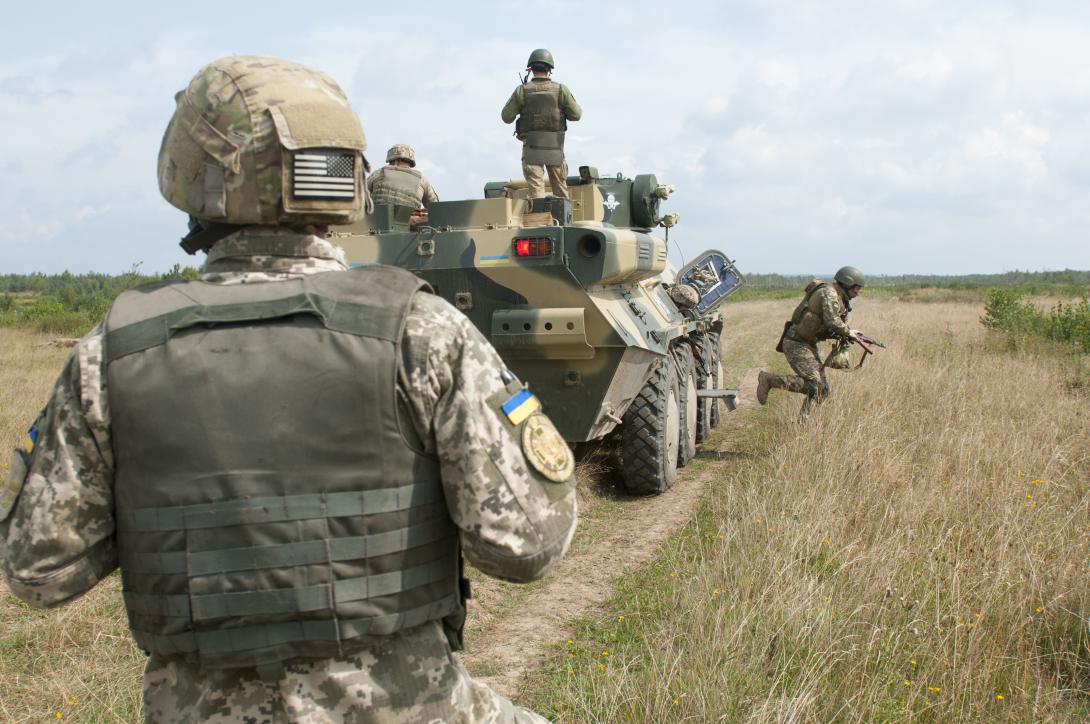Putting Coalition at the Forefront of JADC2
The ongoing conflict in Europe has challenged Ukraine’s, as well as its allies’, warfighters for the last 13 months.
Brig. Gen. Chad D. Raduege, USAF, director of the Command, Control, Communications and Computers/Cyber Directorate and chief information officer, Headquarters U.S. European Command, logged in live from Stuttgart, Germany, to virtually deliver a keynote speech at the AFCEA DC Chapter luncheon on March 22. Topic of discussion: Russia-Ukraine, Lessons Learned from the Conflict.
Sitting alongside Gen. Raduege was Edward Burtle, aka Mr. Mission Partner Environment, of the J6.
The operational imperative of information sharing was a common theme at the luncheon’s discussion. “Ed Burtle is the guy that had an architecture long before Russia began invading Ukraine,” Gen. Raduege stated as he introduced Burtle to the audience. Since the beginning of the war, military leaders have been able to pinpoint and overcome new barriers in the field.
“Ed has been at the forefront of making that magic happen and connecting headquarters; connecting the strategic to the tactical; and making sure that everybody can talk at the appropriate levels,” the general continued.
Secure communication among NATO allies was consequential when Article 4 was initially triggered following Russia’s first attacks against Ukraine, resulting in the U.S. deploying forces into the NATO theater to protect alliance territory, Burtle stated.
“Most of those deployed units were bringing tactical enclaves with differing classification levels and many different capabilities,” he explained. Getting them connected to a persistent secret releasable environment that effectively shares with the U.S. coalition was most important during that timeframe.
The NATO national gateway is connected to the alliance federated system or network, with partners and allies working toward a similar unified approach.
“To gain access into that hub of information sharing has really been what I like to call the ‘birth’ or the equivalent of the ‘world wide web’ here in our European theater,” he said.
Information sharing on both strategic and tactical levels has been a game changer for this area of responsibility (AOR), according to the speakers.
The next step, however, is adopting data-centric solutions. “I think in our AOR, we’re constrained a bit for the fact that we have to work at some levels at the speed of our affiliate partner nations with NATO, and so we have to operate at both a modern interoperability level, but also at the lowest tactical and least mature level,” Burtle said.
The command now seeks hybrid solutions—datacentric and netcentric—to coexist and operate together while accessing mission command systems.
“I think we’re in a good place … but we have a long way to go,” Burtle concluded.
In his closing statements, Gen. Raduege reviewed some of Burtle’s key statements. “The reality is that we do not fight alone,” he affirmed. “The coalition environment is ever more important and we’re seeing that on a daily basis.
“And so, I would just caution and advocate, quite frankly, to put a C in front of JADC2 [joint all-domain command and control].” The first C, Raduege explained, should represent the coalition, to best portray all allies and partners working behind the scenes.




Comments